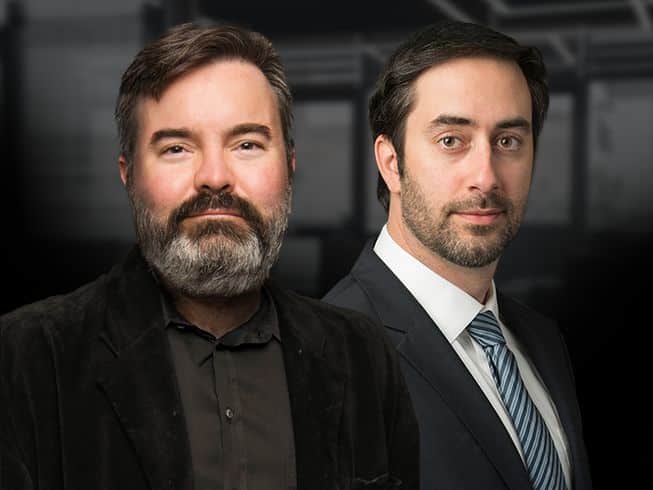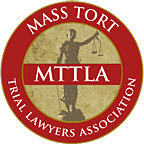U.S.S. Canberra (CA-70/CAG-2)
Over A Billion Recovered Nationwide
U.S.S. Canberra (CA-70/CAG-2)
Construction (as CA-70)
Fore River Shipyard, Quincy, MA on September 3, 1941 laid down Canberra as Pittsburg. She was renamed in honor of the Australian heavy cruiser HMAS Canberra, which was lost in the Battle of Savo Island near Guadalcanal. This made her the only U.S. warship named after a foreign vessel. She was commissioned on October 14, 1943.
Service (as CA-70)
Canberra sailed on January 14, 1944 for the Pacific Theater, arriving at Pearl Harbor on February 1. From there, she joined Task Force 58, just in time for the invasion of Eniwetok Island. She then sailed with the carrier Yorktown for raids on the Palau Islands, and then worked with the famous Enterprise in raids on Truk. The cruiser was with the Fast Carrier Task Force for the Marianas campaign, including the Battle of the Philippine Sea. Afterwards, she raided the Palaus and the Philippines and supported landings on the island of Morotai.
On October 2, Canberra joined the fast carriers once again for raids on Taiwan (then Formosa). She was only 90 miles from that island when a Japanese torpedo bomber fired its payload into her hull. Her engine room suffered heavy damage and twenty-three of her men were killed. Left without power, she had to be taken under tow by the heavy cruiser Witchita, beginning an epic voyage to safe harbor. She joined the light cruiser Houston, which had also suffered heavy torpedo damage, and headed for the forward base at Ulithi. Admiral Halsey, commanding the carriers, attempted to use this small force as bait for the Japanese fleet, but the Japanese commanders predicted the trap and did not deploy. While under tow, Houston took another torpedo and all crew not involved in damage control were evacuated. Her captain and damage control teams made a truly enormous effort, keeping the ship afloat until “Cripple Division One” made it to Ulithi.
Canberra arrived at Ulithi two weeks after the torpedo slammed into her side. Towed to Manus, she received temporary repairs that allowed her to get underway. At this critical juncture in the war, ports up and down the west coast were full of ships being repaired or refitted, so the still badly damaged cruiser was forced to divert to Boston for permanent repairs. She was still in the Boston Navy Yard when Japan surrendered. She sailed for the Pacific and arrived at Bremerton, WA at the end of 1945. She decommissioned there on March 7, 1947.
Conversion to (CAG-2)
The Boston Navy Yard had done an excellent job repairing Canberra and she was selected to be the second WWII heavy cruiser to be converted to a guided missile ship. She left Bremerton under tow on January 4, 1952, arriving later that year at the New York Shipbuilding yard at Camden, NJ. There, she received extensive conversions. Her aft 8-inch gun turret was replaced with two Terrier surface-to-air missile launchers and a missile magazine. In addition, her superstructure was rebuilt and her internal systems were upgraded. Her hull number was changed to CAG-2 (cruiser, heavy, guided missile) and she was reclassified as a Boston-class guided missile cruiser.
Service (as CAG-2)
The rebuilt cruiser reentered service on June 15, 1956 and joined the Atlantic Fleet. She embarked president Eisenhower on March 14, 1957 and transported him to the Caribbean for a conference with British Prime Minister MacMillan. One year later, Canberra was chosen to transport unknown servicemen of WWII and Korea back to the United States for burial in the Tomb of the Unknown Soldier. She rendezvoused with her sister Boston and the destroyer Blandy on May 26, and remains were transferred aboard Canberra. The selection of the two soldiers to be buried at Arlington was made, and the cruiser took her honored passengers to Norfolk.
The ship departed Norfolk on March 3, 1960 for a round-the-world cruise. She visited Australia and Savo Island, the site of HMAS Canberra’s loss. In October 1962, Canberra sailed for Cuba to participate in the naval blockade of that island during the Cuban Missile Crisis. In October 1963, she joined the Pacific Fleet at San Diego. Her new homeport reflected her new mission; Canberra was headed to Vietnam.
The cruiser set out from San Diego on January 5, 1965 for her first Vietnam deployment. She operated from Da Nang as a radar picket ship for Task Force 77 carriers. She left for San Diego at the end of the year, but her stateside term was short, and she redeployed in February 1966. This time, Canberra took a more active role in the conflict. Her 8- and 5-inch guns lent their support to U.S. ground forces on the rivers and coastal waterways of Vietnam, most notably on and near the Mekong, Saigon, and Cua Viet rivers. Her service was highly valued by these troops, and for the remainder of her “in country” periods she operated in this capacity.
While participating in Operation “Sea Dragon” on March 2, 1967, Canberra received two hits from an enemy shore battery. Damage was light and only one sailor was injured, allowing the cruiser to remain on station. Just one month later, she lost her only sailor of the war, when Seaman Doug Hegdahl was accidentally blown overboard by the concussion from one of her 5-inch guns. Recovered by communist forces, Hegdahl was imprisoned in the notorious “Hanoi Hilton” POW camp. His testimony about conditions in the camp provided proof of war crimes committed by the North Vietnamese.
Canberra was present during the Tet Offensive in early 1968. She stood off Hue City, providing vital support for U.S. forces in the city for the duration of the battle. On May 1, the cruiser’s obsolete Terrier missile batteries were decommissioned, and she reverted to her original designation of CA-70 (heavy cruiser). She completed her final deployment to Vietnam in January 1969.
Fate
The veteran cruiser was decommissioned on February 2, 1970 and sent to the Suisun Bay reserve fleet. She remained there until July 15, 1980, when she was sold for scrap. Two pieces of Canberra survived the breakers. One of her propellers is on display at the Los Angeles Maritime Museum, and her bell is displayed in the American wing of the Australian National Maritime Museum.
Risk of Asbestos Exposure
Canberra was a decorated vessel, but she was built at a time when use of asbestos in the insulation of steam engines was mandatory in the U.S. Navy. Consequently, her internal spaces, particularly her engineering spaces, would have contained large amounts of asbestos.
When damaged or worn, asbestos products break down into tiny fibers that can easily spread throughout a ship. The damage that Canberra suffered during WWII would have no doubt released large amounts of these fibers into the ship’s ventilation system.
Asbestos inhalation is a proven cause of mesothelioma, a malignant cancer of the lung. There is no cure for mesothelioma, but treatments such as chemotherapy can be employed to fight the disease. If you or someone you know served aboard Canberra or worked on her in a shipyard and has contracted mesothelioma, please fill out the form at the bottom of this page to receive free information regarding your rights to compensation.
We Take Our Clients’ Cases Personal
Helping Victims of Mesothelioma Is Why We Do What We Do
Your firm has made this stressful process easy and comfortable for me.
I couldn’t have done it without you.
The professionals at Shrader & Associates did the work, hassle free, and ensured I was able to leave a legacy for my family.
Your team stood by me throughout the entire process.
Thanks to you, the grief of my loss would have been almost unbearable otherwise.

The Right Team Makes a Difference
Mesothelioma cases require technical knowledge and an understanding of complex laws. An attorney with experience trying these claims and substantial resources to leverage on your behalf is your best bet to having a strong case. We are nationally recognized for providing quality representation to mesothelioma patients and their families.
Meet Our Attorney










![aaj-leaders-forum[2] U.S.S. Canberra (CA-70/CAG-2)](https://shraderlaw.com/wp-content/uploads/2022/04/aaj-leaders-forum2.png)


